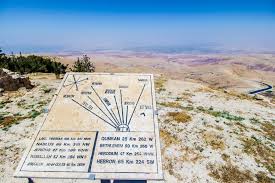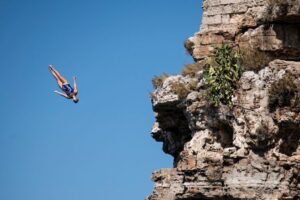The member for Dickson, that doyen of child care ownership, is showing all the compassion that we have come to expect, and for which the good burghers of Dickson rewarded him with an increased majority at the last election. However, it was not all high fives out at Mount Nebo, where 75 per cent of the votes cast there were for the Labor candidate.

It is not that the member for Dickson is not without compassion. He has a daughter born out of wedlock, whom he seems proud to have as part of his family with his second wife. Therefore I find it difficult to know why he is rejecting these two Australian children who are part of the growing multicultural nation family, because they happen to have Tamil parents.
Perhaps some of that affection he has extended to his daughter should rub off in a decision to enable these two little Australian citizens to remain.
But he won’t. He was trained as a Queensland copper to be tough, unrelenting, a man very much into leather. After all, any criticism in his home state is strangled by the Murdoch Press. He cannot stand loss of face. He has had so much of that over the past year. Yet his electorate apparently love him – the May election would have been a good ego stroke for his basic insecurities.
Why can’t these politicians stand loss of face? They are pitiable, but as I said, 53,000 of Dicksers love him.
However, I pity the children far more – and if they want to come back to Australia, they should be given passports like anybody else born in this country, including the Member for Dickson – notwithstanding any change in the Australian Citizenship Act 33 years ago.
Rhiannan Iffland. Who?
I always think I know generally what goes on the sports pages. So it was somewhat surprising when television surfing in a non-English speaking country far from Australia, to come upon Red Bull-sponsored cliff diving. There are seven events this year where the contestants dive off cliffs mostly with temporary platforms jutting out over the sea. I have always associated this daredevil idiocy with the young Mexican divers at Acapulco.
However, now it is an organised sport which allegedly attracts 60,000 to 80,000 spectators, and the Australian, Rhiannan Iffland, who has combined her diving and trampolining into an extraordinary skill, is far and away the best female cliff diver in the world. At her last appearance – diving from the famous restored bridge at Mostar in Bosnia Herzegovina – she achieved straight tens.

The last competition for 2019 is at Bilbao on 14th September where the competitors dive from the La Salve Bridge, 24 metres down into the River Nervion, in full sight of the Guggenheim museum. Majestic daredevilry. The sight of this young woman twisting and somersaulting, slicing into the water feet first is indeed breath-taking. The danger of this diving is underscored by the number of frogmen swimming around in the water waiting for the mishap.
I do not know if anybody can be bothered showing it to an Australian audience, but we are strangely unknowing about this woman’s extraordinary talent, given the fact that women’s sport overall is attracting more and more interest. Perhaps it is because she is so good, that even we Australians get bored with those who win all the time. We just expect it. Do we remember Heather Mackay who won the British open squash title for 16 years in a row before winning the inaugural world championship and then retiring? We certainly remember Winx, quite a female performer.
Rural Health
One of the repeated catchcries is the lack of rural health services in Australia. My response has always been that one has to actively transfer intellectual capital to the “regional, rural and remote areas” to encourage a positive outcome. In this blog, “rural” will be used to encompass all.
One of the most important developments in the medical system, amid all the jeremiads over the past two decades, has been the new medical schools with a rural emphasis, the rural clinical schools and the university departments of rural health.
These teaching institutions have facilitated transfer of intellectual capital to rural areas. Medical teaching has been shown to occur more than adequately outside the metropolitan teaching hospitals; and significant intellectual capital exists already in both the larger and the smaller rural hospitals.
Without this innovation, the health education system would have had great difficulty in handling the increase in medical students that occurred in the decade following the introduction of these new rural facilities.
However, this rural dispersal needs good medical management, and especially with the Government’s obsession with Regional Training Hubs, as though the basic structure does not already exist.
One inspiration underpinning the recommendations of my Rural Stocktake in 1999, which led to Government funding for the establishment of rural clinical schools and university departments of rural health, was the story of the Mayo Clinic and visits made to both to the Rochester Minnesota and Scottsdale Arizona campuses some years before I did the Stocktake.
The Mayo Clinic was formed by the Mayos – father and sons – in Rochester in the 19th century and to me has always exemplified that excellence is not confined to the largest conurbations. The Mayos proved to be very good managers and developed intellectual capital involving a wide range of skills, in the “wilds of Minnesota”.
Then one also remembers the story of a gifted doctor named Samuel Fitzpatrick, who was based in Hamilton in Western Victoria. He was a world authority on the surgery of hydatid disease, then a major affliction – particularly in Western Victoria where sheep farming was a major component of the local economy. The disease was of such importance that the then Royal Australian College of Surgeons established a national hydatid registry in 1926 that, until its cessation in 1950, identified over 2,000 cases. Such attention helped in the campaigns to reduce the incidence of hydatid infection in humans – the intersection of Fitzpatrick the surgeon and Fitzpatrick the public health doctor.
At the height of his practice Dr Fitzpatrick dreamt that this niche disease could propel Hamilton into having its own Australian version of the Mayo Clinic. However hydatid disease lessened as a major disease and, unlike that of his Mayo exemplar, Fitzpatrick’s dream faded. While Hamilton doctors have maintained a high reputation for medical care and procedural competence, this remained a country practice in Victoria.
The surgical virtuosos of the bush, like Fitzpatrick – the doctor who was that generalist with an equal ability to treat any disease or condition – increasingly disappeared. The intellectual capital that they possessed was not translated into major teaching and research facilities in rural Australia, let alone centres for public health as had occurred with the Mayos and their stake in rural America.
The rise of specialist medicine and then sub-specialist medicine, together with their resultant perceived skills and knowledge, concentrated teaching and learning in metropolitan teaching hospitals, and in so doing emphasised the importance of the individual at the expense of the total population denominator.
Public health was dismissed in some quarters as surveillance of “tips and drains” Yet public health training for many years was concentrated in the School of Public Health in the University of Sydney. Public health education as a medical specialty was invigorated by a consultant physician, Sue Morey, and a number of like-minded people following the Kerr White report. Dr Morey headed the resultant Faculty of Public Health Medicine, which ended up within the Royal Australasian College of Physicians.
One of the important outcomes of the growth of rural medical education has been the opportunity to be both director of medical service and director of clinical training. I was able test this association personally and found it fruitful, being involved in the establishment of a medical intern program that requires the interns to undertake 20 weeks in rural general practice, plus the mandatory hospital terms. Health education (rather than medical education per se) has been attached to a group of academics primarily in traditional teaching hospitals. I was lucky with having forward thinking CEOs in a number of rural health care services.
They realised that what I called small teaching services, where the general practitioners have provided a variety of services, are rich teaching environments. I term these health services as “teaching services”. My argument is that by having a series of interns each year, you give the local doctors the opportunity to teach without the layered bureaucracy of the medical colleges telling you what to do.
Hence the 20 weeks in general practice as an intern and the concept of rotating interns ‘in’ to the regional or teaching hospital, not “out “ from those same hospitals. In other words, the small teaching service are allocated the interns; not having to depend on the big hospitals.
That was the core of the M2M program which has been rolled out in across Victoria and, to conform to the commonwealth funding provisions rather than the intent of the program, then called “Rural Medical Generalist Program”. The Rural medical Generalist program is an Queensland concoction of the ACRRM.
It aims to provide a training program for that College and really a reason for that College to exist. Simply put it aims to skill general practitioners to work in the country. A very good thing, but for it to work well it has to have a defined connection with the rural clinical schools – and that was the aim of the intern training program.
Nevertheless, there is this major barrier to this program – the attitude of some senior members of the university hierarchy and their teaching hospitals – not all I would emphasis – who could not care a jot about rural Australia – the major universities are there to perpetuate elitism. You measure that by research dollars not by the benefit you may provide to rural Australia.
Medical education is one of those areas that, in the undergraduate field, have been attached to universities and the post-graduate qualifications left to the various Colleges. As I found out this leaves a gap in the first two post-graduate hospital years as intern and resident medical officer when there is often a high level of angst. There is a need for expertise and experience to assist the doctor in those first two years.
I realised this need for pastoral help with the interns – surely an accompaniment of an empathetic educational environment . Taken seriously medical education without forgetting the importance of public health should be a major concern of any university, which considers itself to have a pastoral role rather than a treasury for the fees of international students. If the university adopt that pastoral challenge just as the Mayos and Samuel Fitzpatrick did, then this whole exercise of having rural clinical schools, defined educational programs in the first two years of post-graduate life as a doctor is still relevant despite being in a different era
As one famous person once said: “Before you capture the citadels, secure the fields first!” Therefore, for the young doctor think of gaining experience in a rural post before tackling, rather than being absorbed into, the “citadel culture” of the urban teaching hospitals.
The Brethren
Back in the 1970s while fresh from his exploits in hastening the departure of Richard Nixon, Woodward wrote a book with Scott Armstrong about the United States Supreme Court from the 1969 term to 1975 term. This was the time when the Court was moving from the liberal court of Earl Warren to the more conservative court of Warren Burger. Earl Warren had resigned in the belief that he would be succeeded by somebody cut from his legislative cloth.
This did not occur, and instead the court became the plaything for Nixon appointees. Not only did Nixon appoint the new Chief Justice in Burger but also three other justices, only one of which – William Rehnquist – fitted what Nixon hoped the court would become – a bastion of conservatism. As with the current Chief Justice French, Burger was elevated directly to Chief Justice with all the administrative load that entailed, without any experience as a Justice of the Supreme Court.
What is fascinating about the book when read against the churning turmoil of the Trump presidency is how complicated are the politics of the Supreme Court. Not for nothing is the book named The Brethren for all the religious overtones that the name implies.
It deals with all the machinations of Roe vs Wade, which is where Trump supporters and the Roman Catholic Church want repealed. It should be realised that seven out of the nine judges concurred with the proposition that including three of the Nixon appointees including Chief Justice Burger voted for the proposition that the United States Constitution protects the rights of a pregnant woman to have an abortion.
Only the newly appointed William Rehnquist, later to become Chief Justice and Byron White, the only Kennedy nominee dissented. So despite the howls of the anti-abortioners, this decision represented a very diverse cross-section of men of different political persuasion.
However, the most chilling aspect of the book was its conclusion when it summarises four cases which hinged on the court’s interpretation of the Fourth Amendment to the United States Constitution. The Fourth Amendment states: The right of the people to be secure in their persons, houses, papers, and effects, against unreasonable searches and seizures, shall not be violated, and no Warrants shall issue, but upon probable cause, supported by Oath or affirmation, and particularly describing the place to be searched, and the persons or things to be seized.
In each case the decided that day in July 1975, the court ruled in favour of government rather then for the individual citizen. The final line says: “the center had won”, which can be roughly translated into “the right were gaining ascendency”.
It had been a short time between 1973 when the Roe vs Wade decision and July 1975 – the so-called Black Tuesday. When The Brethren was published in 1979, the composition of the court remained the same as it was in 1975.
However, changes were afoot with the very intelligent but ideologically driven Rhenquist in the wings awaiting his ascension into the Chief Justice role. In 1981, with the retirement of Burger the die was cast; the die which contains the court ruling in favour of Bush over Gore; the deviousness of McConnell in denying an Obama nominee, and the sad sight of Ruth Bader Ginsberg hoping her pancreatic cancer does not kill her before the next Presidential election -in other words outlasting Trump. Such is the state of American democracy.
Mouse Whisper
An interesting comment overheard in the back streets of Whroo.
Every year, there is a change in the education curriculum in Hong Kong, so eventually the education program between the children of China and Hong Kong will be indistinguishable. The level of information manipulation will be the same.
By the time, the total absorption of Hong Kong into China occurs in 2047, who among those of the “one country, two systems” will have heard of the riots of 2019.
Talk about the long game …

